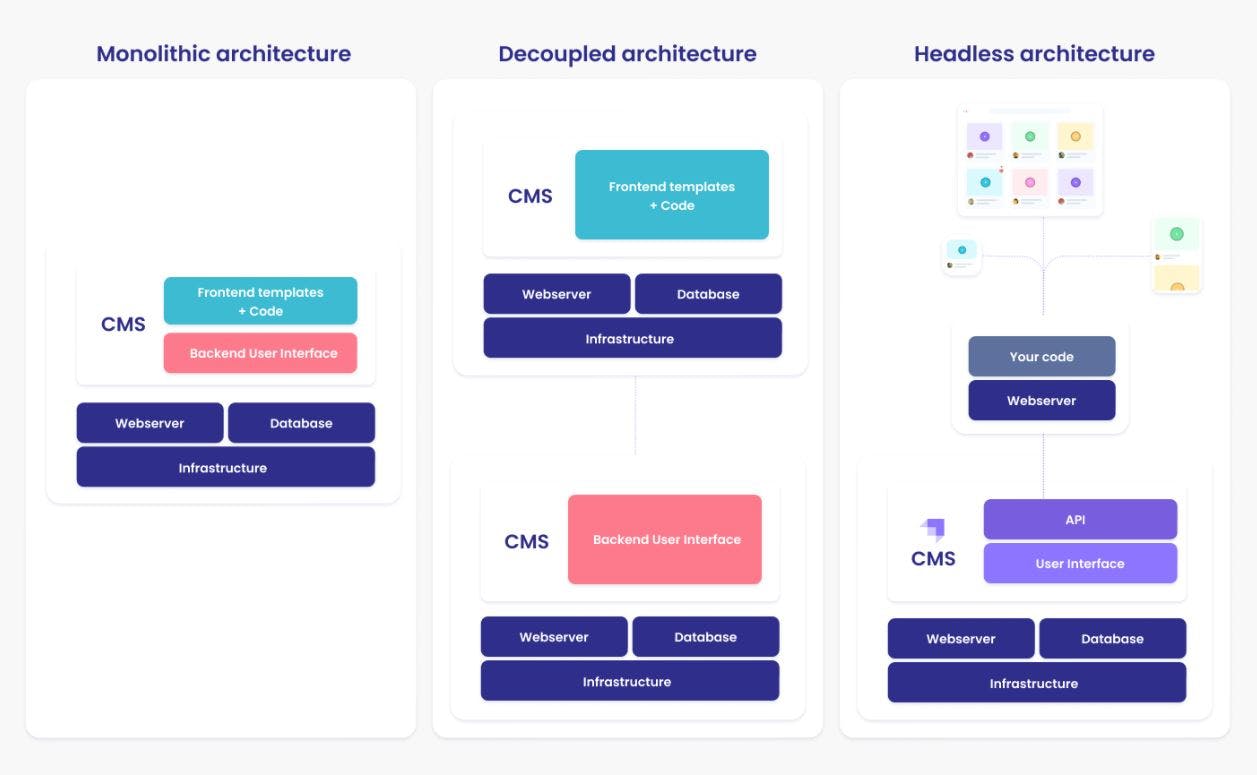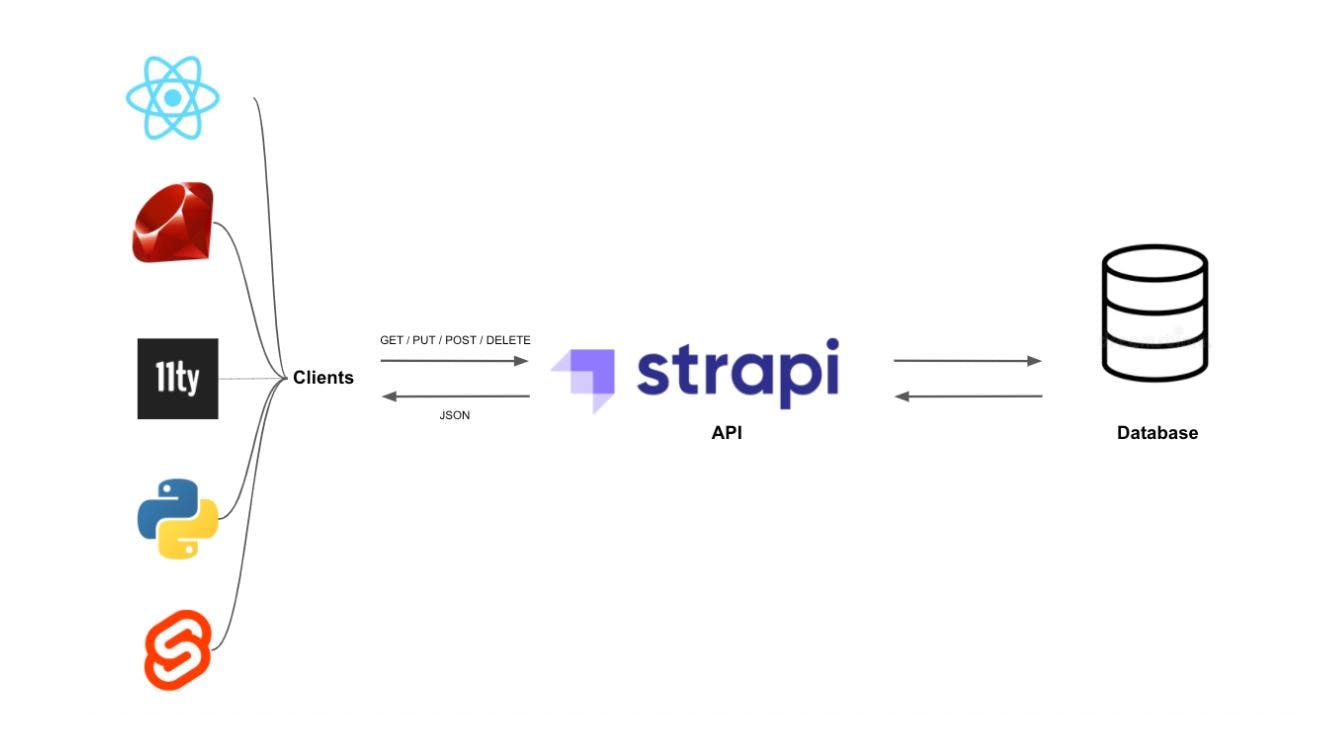What is Strapi
Strapi is an Open Source, self hosting, database agnostic, headless API with a fully customizable CMS, serving data and methods via Restful or GraphQL endpoints.
What is a CMS
A CMS is an interface for adding/editing/deleting content on a website. WordPress is a very commonly used CMS.
A content management system is a tool that helps you build a website without needing to write all the code from scratch.
Instead of building your own system for creating web pages, storing images, and other functions, the content management system handles all that basic infrastructure stuff for you so that you can focus on more forward-facing parts of your website. Strapi is a headless CMS
What is a headless CMS

A headless CMS means it only provides data and methods through an API instead of being part of a template engine and SDK. By separating data from the application language it can be used as a data source for any language or technology.
It allows you and members across your organization to manage and write content and access it across all your applications using an API.
Headless architecture greatly simplifies multichannel publishing. While conventional CMS are perfect for publishing content to a website-type platform, they are not designed to optimize content workflow by allowing users to dynamically post to a variety of platforms.
How does Strapi works

Monolithic CMS relies on an architecture that features a front-end – also known as ‘head’ – and a back-end.
Strapi uses a headless architecture as a result, the raw content can be published through any framework and accommodate any device, virtually anywhere.
The content is published through a web service or API designed to push it to the end user’s devices, which are responsible for interpreting this raw data and translating it into a visual experience.
This introduces the notion of Content as a Service (CaaS), where the content is created once and provided in an XML or JSON format to presentation tiers that can request and publish it multiple times.
Under a headless architecture, delivery formats are much more straightforward as the content can be managed across practically any of them.
Essentially, front-end developers – not bound to a specific structure – are able to build an unlimited number of heads.
Advantages of using Strapi
It is free and open-source, forever. The entire codebase is available on GitHub and is maintained by hundreds of contributors.
It is self-hosted, you can host your data safely, on your own servers and it is GDPR compliant.
It is customizable, its users can easily customize the admin panel as well as the API.
One of the best part of Strapi is that you can consume the API from any client (React, Vue, Angular), mobile apps or even IoT, using REST or GraphQL.
It is 100% JavaScript, just one language to rule them all. Use JavaScript everywhere: both for your front-end and your Headless CMS.
It is extensible by design - plugins system included. Install the auth system, content management, custom plugins, and more, in seconds.
